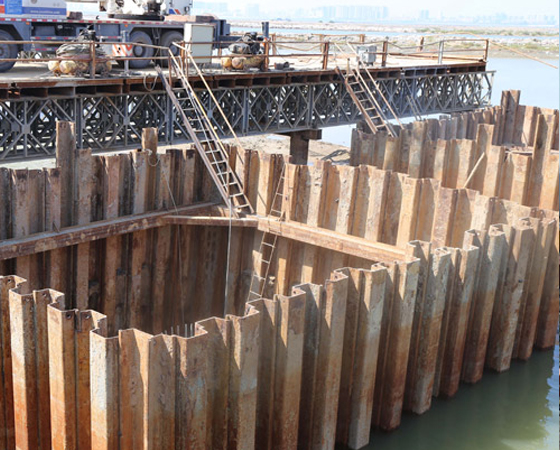Sheet Piles
Sheet piling retains soil, using steel sheets with interlocking edges and is applied using both vibratory and vibration-free installation rigs. Common uses

Services Details
Sheet piling retains soil, using steel sheets with interlocking edges and is applied using both vibratory and vibration-free installation rigs.
Common uses
• Support excavations
• Construct cofferdams
• Construct seawalls and bulkheads
• Create barriers to groundwater flow
Process
Sheet piles are installed in sequence to design depth along the planned excavation perimeter or seawall alignment. The interlocked sheet piles form a wall for permanent or temporary lateral earth support with reduced groundwater inflow. Anchors can be included to provide additional lateral support, if required.
Sheet pile walls have been used to support excavations for below-grade parking structures, basements, pump houses, and foundations, to construct cofferdams, and to construct seawalls and bulkheads. Permanent steel sheet piles are designed to provide a long service life. Vibratory hammers are typically used to install sheet piles. If soils are too hard or dense, an impact hammer can be used to complete the installation. At certain sites where vibrations are a concern, the sheets can be hydraulically pushed into the ground.
Cold rolled sheet piling is less expensive, but provides less water resistance. Hot rolled sheet piling is more traditional and provides better water resistance.
Advantages
• A sustainable option as made of recycled stell and the piles can often be reused
• Available in numerous combinations of size and weight
• Immediate barrier to prevent soil loss and sloughing during excavation
• Permanent sheet piles are designed to provide long service life
